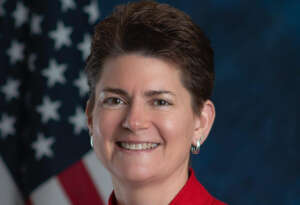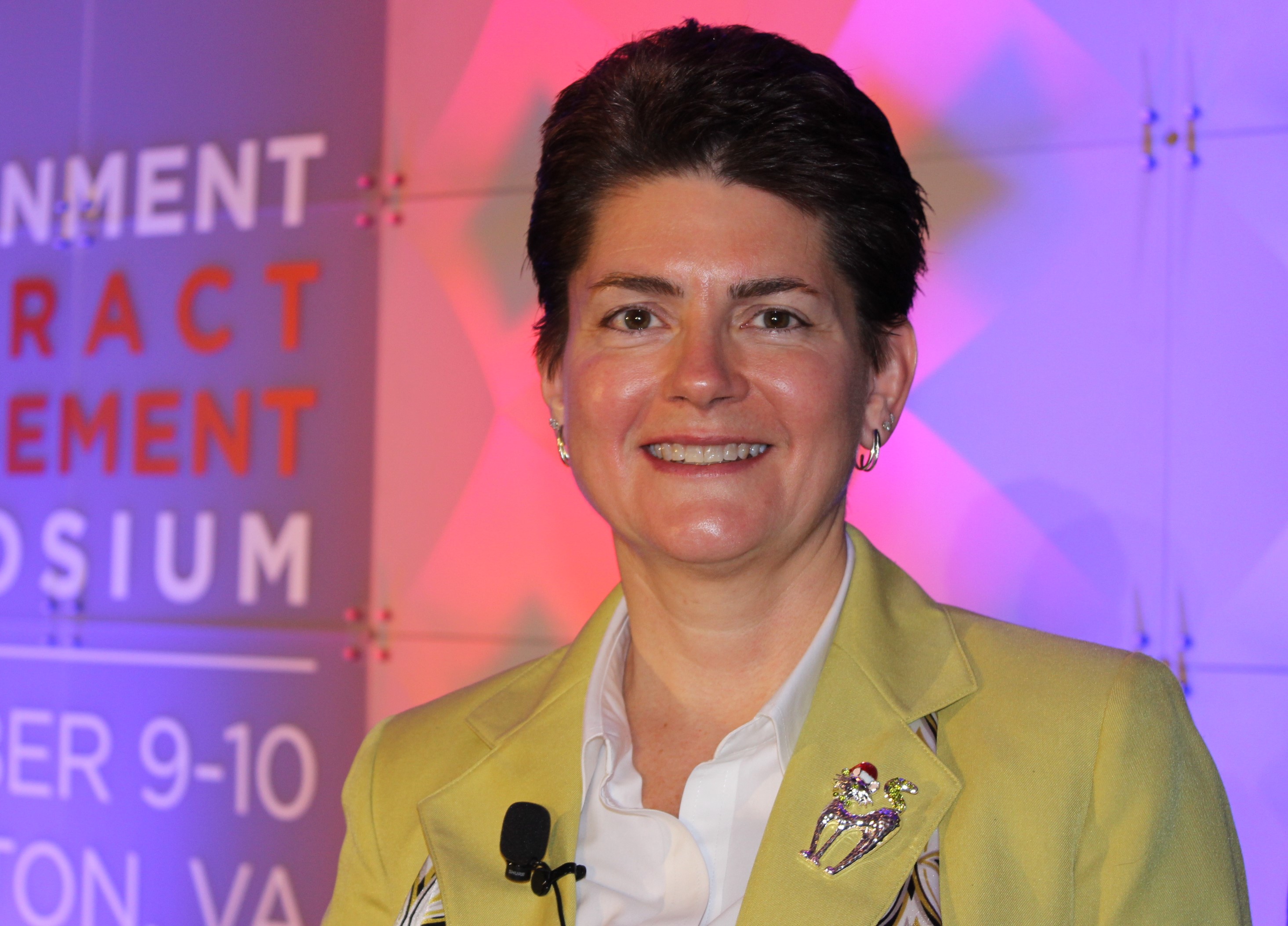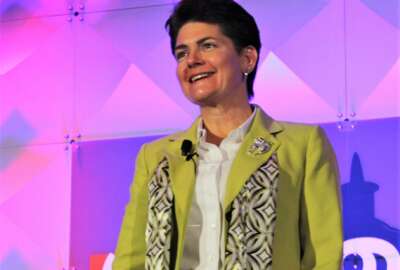Former deputy federal CIO Roat leaned on her relationships to achieve results
Maria Roat, the recently retired deputy federal CIO, retired at the end of March after 41 years of federal service, including the last two as the deputy federal...
Before Maria Roat retired at the end of March, she made sure one important initiative was well on its way.
The former deputy federal chief information officer said the effort to create shared calendar and collaboration tools across all agencies is on the right track.
“When you talk about changing federal IT, we have to continue that work around interagency collaboration and communication. We have to keep in mind the federal enterprise, but also really getting things out of the way around data, using each other’s data, to make things better for the public. That’s ultimately about what we’re doing,” Roat said on Ask the CIO.

This is why the next federal deputy CIO needs not only to pick up this collaboration initiative and others, including modernizing the IT workforce, but also establish strong connections and understandings on the budget side and with agency CIOs. The Office of Management and Budget named Drew Myklegard as the acting deputy federal CIO when Roat retired in March and is reviewing resumes for a permanent deputy federal CIO after putting out the job announcement in mid March.
“Whoever’s coming in, really needs to pay attention to the budget cycle. It’s not moving the needle for just next year, it’s moving the needle for the out years, when you’re thinking through budget,” said Roat, who became the deputy federal CIO in 2020. “I would also tell whoever’s coming in to really build out the relationship with OMB, the desk officers in the Office of the Federal CIO. Their relationships with the agencies is so important, not just the desk officers, but for the deputy, whoever comes in to build the relationship across the federal community. I think that’s really important to stay connected and stay in touch with them. It’s about working on the relationships, have those relationships with the CIOs and keep in touch with them. I always had half of them on speed dial. I was texting them and things like that because the community is so strong and it is so connected, and certainly I could not be successful without having the relationships with the CIOs.”
Collaboration tools from pilot to production
Those relationships are how Roat was able to move the collaboration tools from idea to pilot. Today, the General Services Administration is leading the effort with a program management office stood up in October. It is working with agencies to implement the broad set of calendar and chat capabilities.
OMB oversaw the nine-month pilot effort with four agencies, the National Science Foundation, the Small Business Administration, NASA and the Education Department, in 2021 to prove out the value of this interagency collaboration capability.
Roat said in February at an FCW event that the PMO has a scorecard keeping track of the progress through weekly meetings.
“The technical part is really easy around interagency collaboration. Right now, agencies are already working on their white lists so they can chat and share calendars with other agencies,” she said. “There was a lot of discussion out of the pilot that they needed a memorandum of understanding to talk to another agency. But it makes no sense to do a MOU with 30 different agencies so how about if we just do one? So we are working on that.”
Roat said this initial effort is a baby step of a much larger project that would let agencies collaborate, share data and information.
“This is one little thing that I think is hugely impactful,” she said. “I love what the Defense Department’s done using Office 365 and opening that up. On the federal civilian side, this is where we are heading, not just for Microsoft. We know we have other collaboration capabilities, whether it’s Google or pick your tool. We’ve got testing on with calendar sharing between Microsoft and Google. It’s much more than that. It’s much more than just the technology. We are looking holistically at what are the policies and things that need to be addressed because people always ask questions about FOIA and things like that. This is much bigger that just doing chat and calendar sharing. This is the first baby step into a much bigger vision of having broad interagency capabilities around collaboration across the federal government.”
Too many workforce initiatives
The other big initiative the next federal deputy CIO should consider is consolidating the IT and cyber workforce initiatives.
Roat said there are too many disparate initiatives whether at the CIO Council or from the Cybersecurity and Infrastructure Security Agency or from the U.S. Digital Service in OMB.
“I always thought that if there was a federalwide IT and cyber workforce strategic plan that brought a lot of this together, that incorporated recruiting, marketing, not just USAJobs or LinkedIn, but true marketing like the way DoD recruits for the military,” she said. “It would require agencies to be part of the strategic workforce plan to convert some of the higher graded GS-14 or -15 positions, turn them into career ladders for GS-5, -7, -9 grades or -7, -9, -11, -12 grades. It would bring in digital native high school and college students at the beginning of their careers and put them in a career ladder. While they’re digital natives, you have got to teach and train them. But you could trade in two GS-15 positions in and with that money get three or four GS-5, -7, -9 levels.”
Roat pointed to the data from OMB in the 2023 budget request that showed federal IT workers under 30 make up about 3.5% of the total workforce, while the number of workers under 30 years old is 8.1% across the entire federal government.
The White House is trying to address the low rate of young people by encouraging agencies to hire more interns. Agencies say they plan to hire 35,000 interns in 2023, which the administration said will be an increase over 2022 plans.
“How do they grow their career when they they’re a 30-year-old who has been working in government for a few years?” Roat said. “Can they move around inside the government or do they go back to the private sector? I think that’s about having that career path and being able to do something. I think it’s great to bring people into the federal government and infusing a lot of that talent in agencies. But we can’t forget about growing people in the government, who maybe like myself or others really love what they do and maybe want to stay and not jump back and forth with the private sector.”
Roat’s federal career started in the Navy as a 17-year-old working in a computer tape library. She continued to advance by working on mainframes and getting into operations and networking. She then rose through the ranks working at the Department of Homeland Security, later became the Transportation Department’s chief technology officer, and eventually she launched the Federal Risk Authorization Management (FedRAMP) cloud security program. All those experiences led her to be the CIO at the Small Business Administration and, finally, the deputy federal CIO.
“I don’t know that I’ve had the same job twice. It’s always been different. In my career, I’ve certainly zigzagged and I think that’s what allowed me to get to where I am, just having the exposure to so many different roles and so many jobs, and not always technical,” she said. “I’ve always just did a lot of different things and I really think that helped me to get to where I am today. And being curious, certainly, and moving around and learning and staying on top of technology as technology changed.”
Copyright © 2025 Federal News Network. All rights reserved. This website is not intended for users located within the European Economic Area.
Jason Miller is executive editor of Federal News Network and directs news coverage on the people, policy and programs of the federal government.
Follow @jmillerWFED






